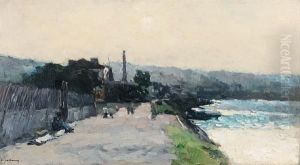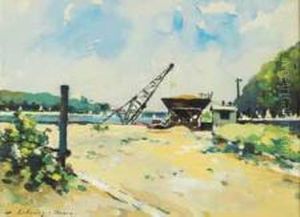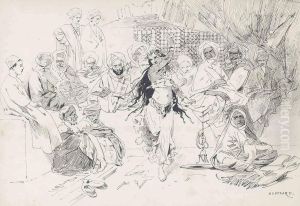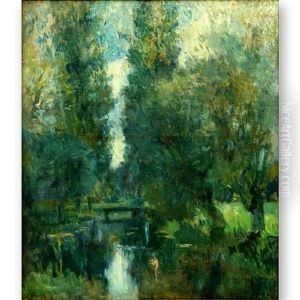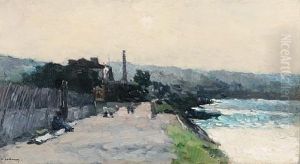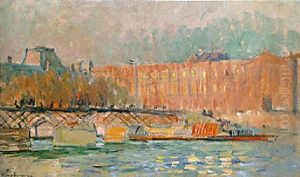Charles Auguste Lebourg Paintings
Charles Auguste Lebourg, born on February 26, 1829, in Nantes, France, was a French sculptor known for his contributions to urban architecture and the development of public monuments in the late 19th century. Lebourg was a student at the École des Beaux-Arts in Paris, where he studied under noted sculptor François Rude. Rude's influence is evident in Lebourg's work, particularly in his attention to detail and the dynamic expressions of his figures.
Throughout his career, Lebourg participated in various salons and exhibitions, gaining recognition for his artistic skills. One of his most notable works is the Wallace fountains in Paris. Sir Richard Wallace, a British philanthropist, commissioned Lebourg to design these public drinking fountains in the aftermath of the Franco-Prussian War. The war had caused significant damage to the aqueducts of Paris, and Wallace's initiative aimed to provide clean drinking water to the residents of the city. The fountains, which were designed in the 1870s, remain iconic features of Parisian streetscapes and are celebrated for their elegant cast-iron designs combining both utilitarian function and aesthetic appeal.
In addition to the Wallace fountains, Lebourg created various other sculptures and monuments, many of which reflect the eclectic tastes of the time, blending classical and contemporary elements. His work was part of the sculpture event in the art competition at the 1900 Summer Olympics.
Charles Auguste Lebourg's contributions to sculpture extend beyond his individual works to his impact on public spaces. His commitment to integrating art with everyday urban environments helped to beautify cities and make art accessible to the public. Lebourg passed away on June 25, 1906, in Paris, leaving behind a legacy of art that continues to be appreciated both for its historical significance and its enduring charm.
